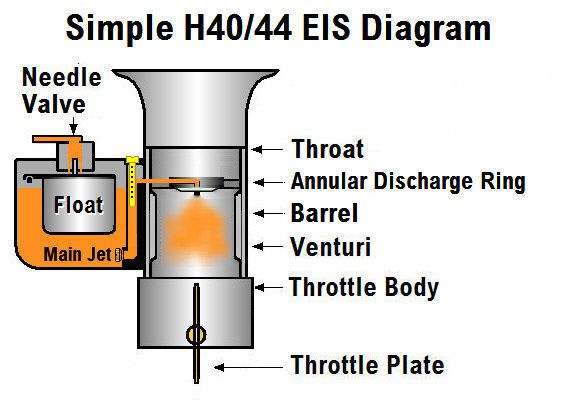
Above: The Solex/Kadron power circuit in action. The "annular discharge ring" is a secondary venturi that draws more fuel at maximum intake velocity.
Venturis -- When Smaller is Better
There are highly scientific formulas and precise-looking charts that inform us what venturi sizes we need for given displacement and max RPM.
Doing what the charts dictate usually give you an optimal, if theoretical, performance whenever your RPM hits that venturi size sweet spot. Also, doing what the charts dictate means you are out of your prime power zone at all but max RPM.
If you were running LeMans and tune for the best top end on the 3.7 mile Mulsanne Straight (as you should), the charts will be right. A mainstay rule of racing is to adjust your handling to best take the turn that leads to the longest straight. And of course, your carbs must be tuned to provide your best top end power on that most vital straight.
But what if you're mostly running errands but can't turn down the ocassional stoplight drag or dice through some country road esses?
Easy answer. If the chart says you should run a 36mm venturi, run a 34mm. Lots of tuners have been suprised to discover dropping a venturi size really "wakes up" an engine.
Conventional wisdom says the bigger venturi gives more power. So if you drop a size and get faster, what happened?
Simple. A smaller venturi accelerates airflow, increasing intake velocity, while (and this is the big reason) the increased velocity alters the pressure differential in the venturi and richens the fuel mixture.
Even better, the carb's power circuit (the spray nozzle from the secondary-venturi "annular ring" in the Solex/Kadron diagram above, and the Weber has it's own equivalent) kicks in faster. You feel power at a lower RPM.
The downside of a smaller venturi on an engine that can really use it is less absolute top end. The upside of one size drop is better accelleration and overall better response.
FJC